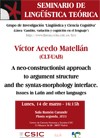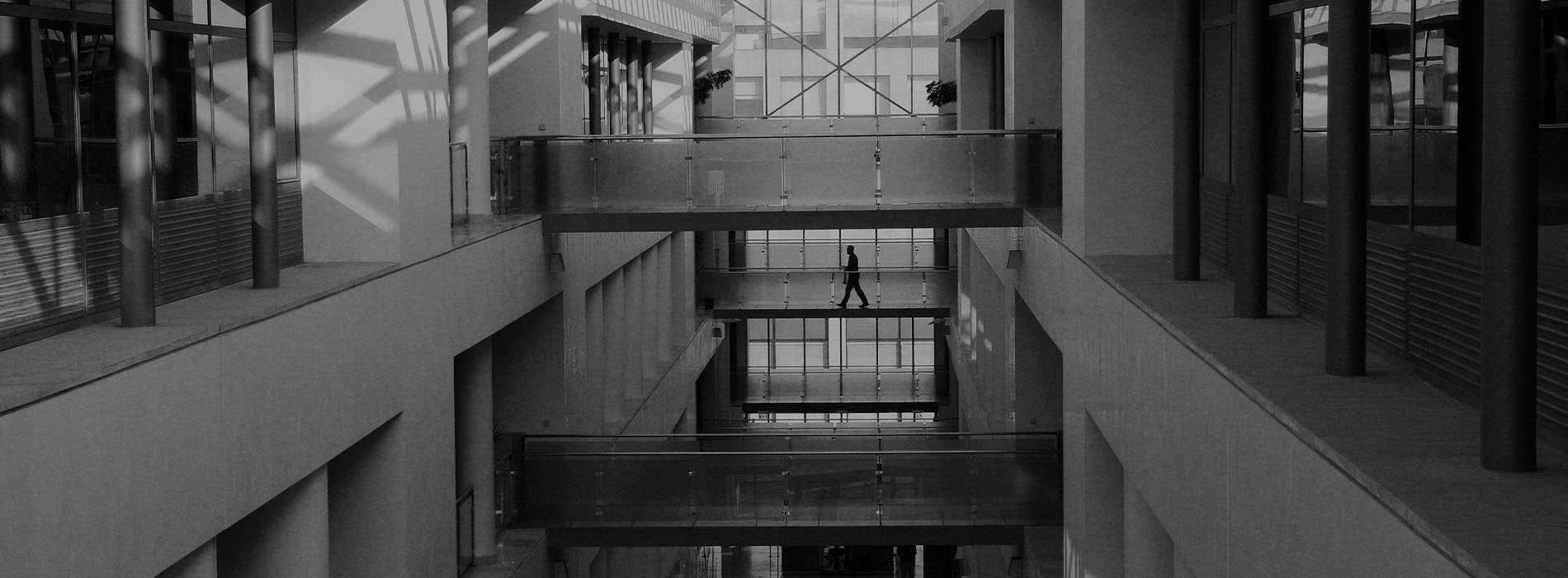Seminario de Lingüística Teórica LyCC: "A neo-constructionist approach to argument structure and the syntax-morphology interface. Issues in Latin and other languages"
Por Víctor Acedo Matellán (CLT - Univ. Autónoma de Barcelona)
Sala Ramón Carande 2F
In this talk I present the main points of my recently defended dissertation (Acedo-Matellán 2010). The talk is structured in three parts: the theoretical framework, an application to Latin data and a proposal to account for cross-linguistic variation. The theoretical framework incorporates, on the one hand, the adoption of a neoconstructionist theory of argument structure (Marantz 1997, Mateu 2002, Borer 2005), whereby argument structure is undistinguishable from plain syntax and, on the other, the assumption of the Distributed Morphology model of the syntax-semantics interface. While the former allows for uniformity of LF representations of the vP across languages, the latter aims, on the contrary, at accounting for cross-linguistic differences in the expression of those structures. Variation is therefore restricted to the structuring of events of change and, inPF interface, specifically to the PF realisation of functional heads. With respect to the first aspect of the theory, I focus on particular, on the syntactic and semantic properties of Path, a functional head introducing a transition. With respect to the second aspect, I implement PF as a series of operations, focusing on Lowering and Fusion (Embick & Noyer 2001) and proposing that conflation à la Hale & Keyser (1993) constitutes one of these operations (see also Harley 2004). I consider, next, Talmy’s (2000) theory of the cross-linguistic expression of events of change, where a basic divide is drawn between the languages in which the transition can be encoded by a non-verbal element —satellite-framed languages— and the languages in which the transition must be encoded by the verb —verb-framed languages. I explore a wide range of constructions in Latin and analyse them in terms of the theory presented above to show that this language is a satellite-framed one. Time permitting, I will discuss Complex Directed Motion Constructions, Unselected Object Constructions, Complex Effected Motion Constructions and Pseudoreversative Constructions. On the crosslinguistic side, I propose, drawing on Mateu & Rigau 2002, that the s-/v-framed distinction is explainable in purely morphophonological terms: in v-framed languages the eventive v head lowers, at PF, to the head encoding transition —Path— and fuses with it, yielding a unique locus for phonological realisation. On the other hand, in sframed languages this Fusion operation does not take place, so v and Path are free to be phonologically realised independently from each other. Finally, I propose a refinement of Talmy’s typology within the class of s-framed languages: in strong sframed languages, like Germanic, v and Path are not required to form one word, so constructions like complex adjectival resultative constructions are allowed; in weak sframed languages, like Latin, v and Path must form one word and, hence, constructions like adjectival resultative constructions are disallowed. This distinction is accounted for in terms of a v-to-Path (PF) Lowering operation for weak s-framed languages, which creates a complex head. A three-way, gradual typology emerges encompassing strong s-framed languages (no v-to-Path Lowering and no Path-v Fusion), weak s-framed languages (v-to-Path Lowering, no Path-v Fusion) and vframed languages (v-to-Path Lowering and Path-v Fusion).
Organiza: Grupo de Investigación "Lingüística y Ciencia Cognitiva". Línea Cambio, variación y cognición en el lenguaje.



